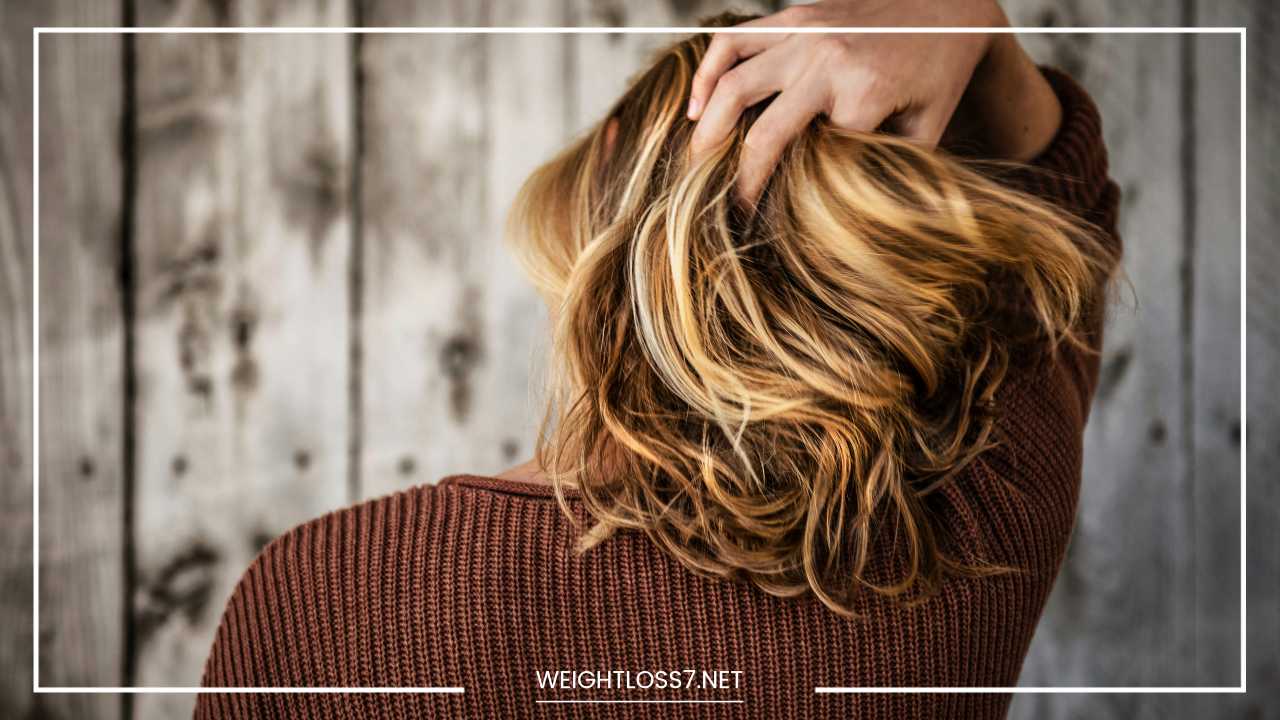Hair Care for Everyone: Discover Your Perfect Routine

Hair Care
Hair Care: A Guide to Healthy, Beautiful Locks
Hair. It’s a source of immense pride, a canvas for self-expression, and sometimes, a source of frustration. Regardless of your relationship with your mane, understanding how to care for it can unlock its full potential.
Healthy hair isn’t just about aesthetics; it’s about maintaining a healthy scalp, promoting growth, and achieving a style that makes you feel confident.
This comprehensive guide dives deep into the world of hair care, equipping you with the knowledge to create a personalized routine that keeps your locks looking and feeling their best.
Understanding Your Hair Type: A Deeper Dive
The foundation of any good hair care routine is understanding your unique hair type. Beyond the basic categories of straight, wavy, curly, and coily, there are additional factors to consider:
- Hair Density: This refers to the thickness or thinness of individual hair strands. Fine hair can be prone to breakage, while coarse hair can be resistant to styling products.
- Hair Porosity: This describes how easily your hair absorbs and retains moisture. Low porosity hair has a tightly closed cuticle and repels moisture, while high porosity hair has a more open cuticle and absorbs moisture quickly but can lose it just as fast.
Advanced Hair Care Techniques:
Once you’ve grasped the basics, consider incorporating these advanced techniques to elevate your hair care game:
- Clarifying: While regular shampoos remove dirt and product buildup, a clarifying shampoo removes hard water minerals and excess styling products that can leave hair dull and weighed down. Use a clarifying shampoo once a month (or less frequently for dry hair) for a refreshed and revitalized feeling.
- Scalp scrubs: Exfoliating your scalp with a gentle scrub can remove dead skin cells, stimulate circulation, and promote hair growth. Focus on gently massaging the scalp, not scrubbing the hair itself.
- Protein treatments: Protein is a building block of hair. Protein treatments can strengthen weak or damaged hair and improve its elasticity. However, overdoing it can lead to brittleness, so use protein treatments only when necessary.
Hair Care for Specific Hair Concerns (Expanded)
- Dry hair: Dry hair lacks moisture and can be prone to breakage and frizz. Opt for hydrating shampoos and conditioners containing ingredients like hyaluronic acid or shea butter. Deep condition regularly and consider incorporating hair masks or leave-in conditioners for extra moisture. Consider diffusing your hair on a low heat setting to minimize frizz.
- Oily hair: Oily hair produces excess sebum, making it appear greasy. Use gentle shampoos formulated for oily hair. Look for ingredients like tea tree oil or peppermint, which can help regulate sebum production. Avoid heavy conditioners and focus on applying them only to the mid-lengths and ends. Consider using dry shampoo between washes to absorb excess oil.
- Color-treated hair: Colored hair requires extra care to prevent fading and maintain vibrancy. Use color-safe shampoos and conditioners that are formulated to protect dyed strands. Minimize heat styling and use a cool rinse after shampooing to close the hair cuticle and lock in color. Consider hair masks specifically designed for colored hair to add extra moisture and vibrancy.
- Damaged hair: Heat styling, chemical treatments, and environmental factors can damage hair. Repair damaged hair with a focus on deep conditioning and strengthening treatments. Use products with ingredients like keratin or ceramides, which can help repair the hair shaft. Avoid tight hairstyles that can pull on damaged hair and trim split ends regularly.
Embrace Your Natural Texture
The natural hair movement has rightfully taken center stage, inspiring individuals to embrace their natural hair textures. Here’s how to enhance your natural curls, coils, or waves:
- The Science of Curly Hair: Curly hair has a unique structure that requires specific care. Understand the “Curly Girl Method” (CGM) which focuses on avoiding products containing sulfates, silicones, and drying alcohols, which can strip moisture from curly hair. The CGM emphasizes the LOC method (leave-in conditioner, oil, cream) for maximum hydration and frizz control.
- Diffusing Techniques: Diffusing is a heat-styling technique specifically designed for curly hair. Use a diffuser attachment on your blow dryer on a low heat setting to dry your hair gently without disrupting the curl pattern.
- Protective Styles: Protective styles like braids, twists, and bantu knots are a great way to retain moisture and minimize breakage for curly and coily hair. These styles also allow you to experiment with different looks without manipulating your hair daily.
Hair Care Beyond Products: A Holistic Approach
While products play a crucial role in hair care, a holistic approach that considers your overall well-being is essential for healthy, beautiful hair:
- Diet and Supplements: A balanced diet rich in protein, iron, vitamins A, B, C, and essential fatty acids is crucial for hair health. Consider incorporating foods like salmon, leafy greens, nuts, and berries into your diet. If you have dietary restrictions or suspect deficiencies, consult a doctor about hair-specific supplements like biotin or iron.
- Stress Management: Chronic stress can disrupt the hair growth cycle and contribute to hair loss. Practice stress-relieving activities like yoga, meditation, or deep breathing exercises. Getting enough sleep (7-8 hours per night) is also essential for overall health, including hair health.
- Scalp Health: A healthy scalp is the foundation for healthy hair. Maintain scalp health by:
- Gently massaging your scalp while shampooing to stimulate blood circulation and promote hair growth.
- Avoiding harsh chemical treatments that can irritate the scalp.
- Treating dandruff or scalp conditions promptly to prevent further irritation and hair loss.
Hair Loss: Understanding and Addressing the Issue
Hair loss is a common concern for many people. Here’s a breakdown of different types of hair loss and potential solutions:
- Telogen effluvium: This is a temporary form of hair loss caused by stress, illness, or hormonal changes. It usually resolves on its own within a few months.
- Androgenetic alopecia (male pattern baldness or female pattern hair loss): This is a genetic form of hair loss that affects both men and women. There are various medications and treatments available to slow down hair loss and promote regrowth, but it’s best to consult a dermatologist for personalized advice.
- Alopecia areata: This is an autoimmune disease that causes patchy hair loss. Treatment options depend on the severity of the condition.
Lifestyle Choices and Hair Health
Certain lifestyle choices can impact your hair health:
- Smoking: Smoking constricts blood vessels, reducing blood flow to the scalp and hindering hair growth.
- Excessive alcohol consumption: Alcohol can dehydrate the body, leading to dry and brittle hair.
- Tight hairstyles: Tight hairstyles like braids or ponytails can put stress on the hair follicles and lead to breakage, especially on already weak or damaged hair. Opt for looser styles whenever possible.
- Environmental factors: Sun exposure, chlorine in swimming pools, and harsh weather conditions can damage hair. Use a hat to protect your hair from the sun, and consider using a clarifying shampoo after swimming to remove chlorine buildup.
Tools of the Trade: Choosing the Right Hair Care Products
With a vast array of hair care products available, choosing the right ones can be overwhelming. Here are some tips:
- Identify your hair type and concerns: Understanding your hair’s needs is the first step. Look for products formulated for your specific hair type (straight, wavy, curly, etc.) and any concerns you have (dryness, color-treated, etc.).
- Read the label: Pay attention to the ingredients list. Look for products containing nourishing ingredients and avoid harsh chemicals that can damage your hair.
- Consider natural alternatives: Many natural ingredients like coconut oil, argan oil, and aloe vera can be beneficial for hair health. Explore natural hair care options, but be sure to do a patch test before applying a new product to your scalp.
- Invest in quality tools: Using the right tools can make a big difference in your hair care routine. Invest in a good quality shampoo brush for scalp stimulation, a wide-tooth comb for detangling, and a microfiber hair towel to minimize frizz.
Sustainable Hair Care Practices
Hair care doesn’t have to come at the expense of the environment. Here are some tips for sustainable hair care:
- Reduce water usage: Wash your hair less frequently and use a low-flow showerhead to minimize water consumption.
- Choose eco-friendly products: Look for brands that use natural ingredients, sustainable packaging, and cruelty-free practices.
- DIY hair care: Consider making your own hair masks or treatments using natural ingredients like avocado, honey, or yogurt.
- Upcycle and reuse: Repurpose old shampoo bottles or use a microfiber towel instead of paper towels to dry your hair.
Beyond the Basics: Advanced Styling Techniques
For those who want to take their hair care a step further, here’s a glimpse into some advanced styling techniques:
- Haircuts and Styling: Regular trims are essential to remove split ends and maintain healthy hair growth. Consult with a hairstylist who understands your hair type and desired style to get the perfect cut. Explore various styling techniques like blowouts, roller sets, or braiding to achieve different looks.
- Hair Extensions: Hair extensions can add length, volume, or color to your hair. There are various types of extensions available, each with its own application and maintenance process. Research different extension options and consult with a hairstylist experienced in extensions to find the best fit for you.
- Keratin Treatments: Keratin treatments are designed to smooth and straighten frizzy or curly hair. These treatments can be expensive and require maintenance, so weigh the pros and cons before committing.
Hair Care for Different Hair Lengths
Hair care routines can vary slightly depending on your hair length:
- Short Hair: Short hair requires regular trims to maintain its shape. Use volumizing products to add body and texture. Experiment with different styling products like gels, waxes, or pomades for a variety of looks.
- Medium Hair: Medium hair offers more styling versatility. You can experiment with braids, waves, curls, or updos. Deep conditioning is essential for maintaining healthy hair, especially for those who heat style frequently.
- Long Hair: Long hair requires extra care to prevent breakage and split ends. Regular trims are a must. Use detangling sprays and brushes to minimize breakage during combing. Deep conditioning treatments are crucial for keeping long hair hydrated and healthy.
Hair Care for Men
Men’s hair care needs differ slightly from women’s. Here are some key considerations:
- Scalp Care: Men are more prone to dandruff due to hormonal differences. Use shampoos formulated for men that address scalp concerns like dandruff or oily hair.
- Hair Loss: Male pattern baldness is a common concern. Consult a dermatologist if you’re experiencing hair loss to explore treatment options.
- Shorter Styles: Men’s haircuts are typically shorter and require less styling maintenance. Use styling products like gels or waxes for a polished look.
Hair Care for Children
Children’s hair is delicate and requires gentle care:
- Tear-free shampoos: Use tear-free shampoos formulated for children’s sensitive scalps.
- Avoid harsh chemicals: Opt for natural hair care products specifically designed for children.
- Minimize heat styling: Children’s hair is more susceptible to heat damage. Avoid heat styling whenever possible and use a lower heat setting if necessary.
- Detangling with care: Use a wide-tooth comb and detangling spray to prevent breakage when brushing your child’s hair.
Hair Care for Specific Ethnicities
Hair textures and needs can vary greatly across different ethnicities. Here are some general pointers:
- African American Hair: African American hair is typically dry and has a tightly coiled texture. Deep conditioning treatments are essential for maintaining moisture. Opt for sulfate-free shampoos and products designed for curly or coily hair.
- Asian Hair: Asian hair is often fine and straight. Use volumizing products to add body and avoid heavy conditioners that can weigh down the hair.
- Latina Hair: Latina hair can range from wavy to curly to coily. Use hydrating products and treatments to combat dryness. Consider the Curly Girl Method or similar techniques for curly or coily Latina hair.
Remember: These are general guidelines, and consulting with a hairstylist familiar with your specific hair type and ethnicity is always recommended.
By incorporating this comprehensive knowledge into your hair care routine, you can embark on a journey towards healthy, beautiful hair that reflects your unique style and personality.
So, embrace the fascinating world of hair care, experiment with confidence, and enjoy the process of creating your best hair yet!
Final Word: A Journey to Healthy Hair
Hair care is a journey, not a destination. By understanding your hair type, incorporating a personalized routine, and adopting a holistic approach, you can achieve healthy, beautiful hair that reflects your unique style and personality.
Embrace the process, experiment with different techniques, and enjoy the journey to healthier, happier hair!

















